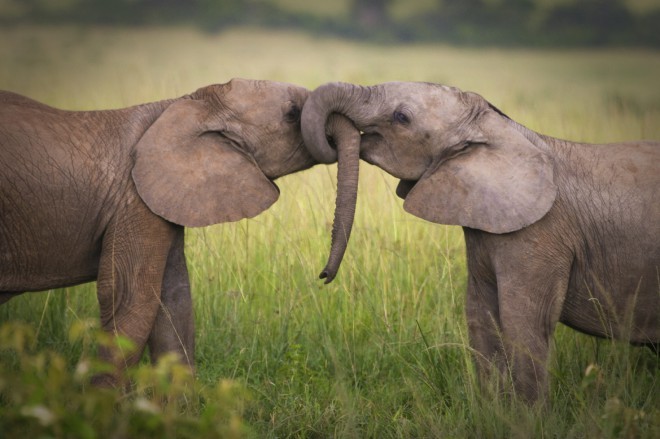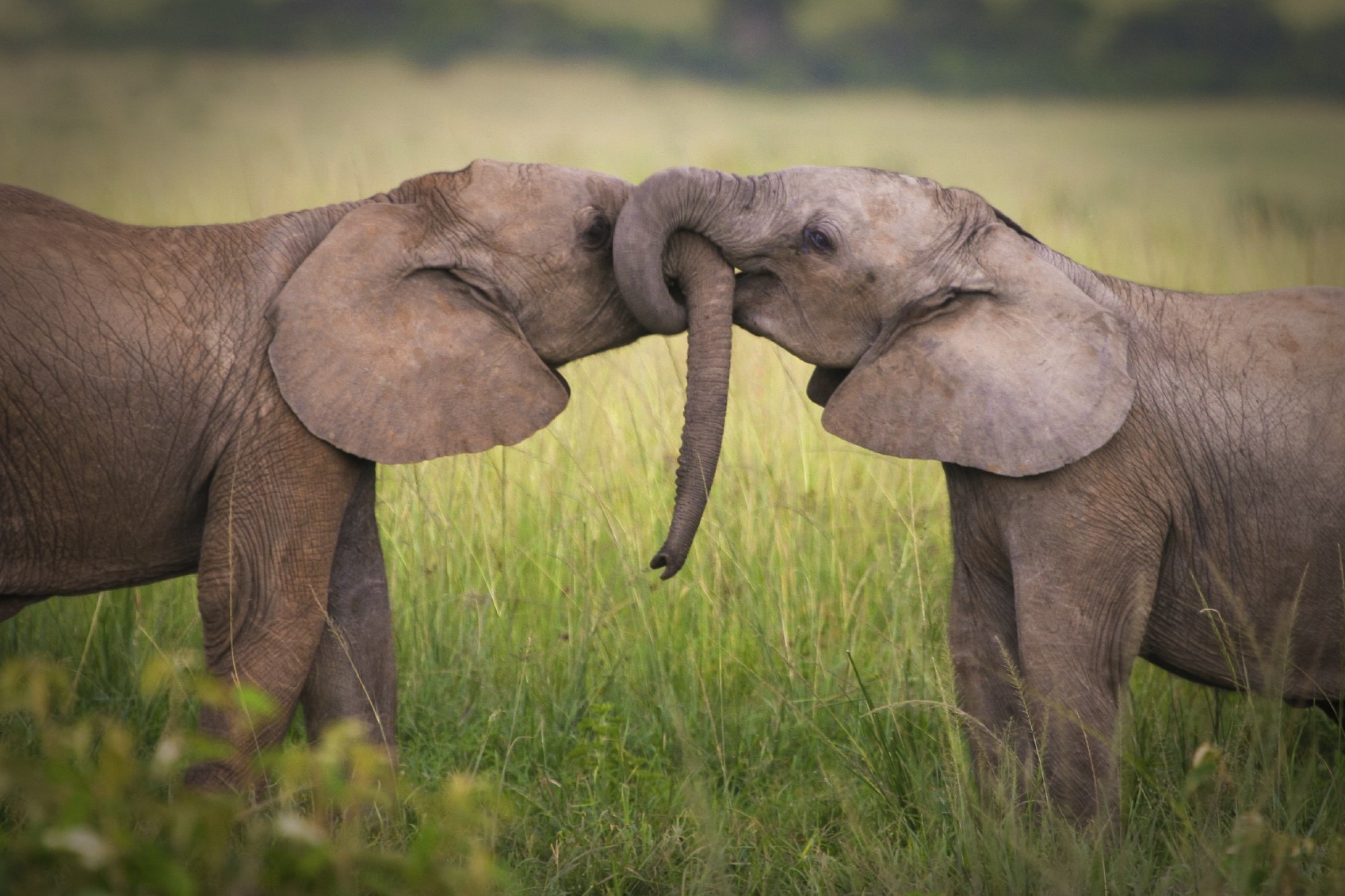Of course, elephants are not people. But they approach us in many ways. And it is sad that as many as 35 thousand were killed in 2013, all for the sake of the precious ivory. Some environmentalists are warning that most elephants will be extinct by 2020, so it's time to stop this careless treatment. Our history is intertwined with elephants, and we learn something new about their intellect time and time again. Many studies show that this is a friendly, self-confident and very loyal creature. Well, they're not that different, are they?
1. Elephants have a sense of self and awareness, like chimpanzees, dolphins and humans.
In 2006, researchers from Emory University set up mirror in the room, where 3 Asian elephants were located. Each of them touched the mirror to see if it was another elephant, explored the place behind the mirror and looked at themselves and their reflection in the mirror to make sure what they were actually seeing. Among other things, one of them, named Happy, found that she had a white X drawn on her forehead, which was only visible in the mirror. The reason why she succeeded is according to experts the ability to recognize oneself as an individual and not just as part of a herd. Among other things, the researchers noted that only half of the chimpanzees pass the test.
2. Elephants are compassionate.
The sense of self and awareness in elephants is probably the result social and selfless habits of elephants. The evidence suggests that it is mutual aid a regular part of life in an elephant herd.
Researchers studied 26 elephants in six groups in a park in Thailand to confirm that elephants comfort each other. Of course, they didn't deliberately upset them, but rather waited for the opportunity to present itself (for example, a rattlesnake in the grass or the sound of a dog nearby). They found out that he was lying down they announce with a singing voice, and kindly embrace the more unfortunate ones in the herdo. Such behavior has so far only been seen in monkeys, wolves and some species of birds.
Some anecdotes show that their compassion extends beyond the herd. An elephant in India trained to help with heavy woodwork is said to once refused to work until a trapped dog was removed from the site into a hole.

3. Elephants understand teamwork.
In 2011, an experiment was conducted in Thailand where two elephants could only reach food by pulling their end of the rope. If only one pulled it, they didn't get food. Not only are they elephants understood the rope system, but they realized that they would get food that way if they did helped each other. One particularly clever elephant, however, played the game. Instead of pulling your end of the rope, it's simple stood on top of him, forcing his partner to do all the pulling work.
4. Elephants mourn their loved ones.
Elephants have long been known to mourn— they are even able to cry. Dead elephants are buried under dust, branches and leaves and the dead elephant's mother stays with the corpse for several days. In one experiment, researchers from the University of Sussex found out how strongly elephants have an interest in their dead, namely preference they are investigating the skull of a dead elephant like a piece of wood or a rhinoceros skull. When members of the herd pass by a dead elephant, they they touch the bones silently, perhaps out of respect. And when they lose a herd member, they become visible and audible in distress. Also other herds of elephants visit the corpse.
Although elephants are said to show little interest in the corpses of other animals, one anecdote suggests otherwise. In 2004, an African elephant trampled a mother and child to death in Kenya. Before he left the scene, however covered the corpses with leaves and twigs.
5. Elephants cultivate lifelong family bonds.
Unlike human society in the past, they are elephants matriarchal society, where one female presides over a herd of other females and cubs. Adult males meanwhile roam either alone or in herds with other males. The strongest relationship is between mother and cub – especially mothers and young elephants they stay together for life, until the mother passes away. And this is nothing unusual, as the matriarchy is transferred to the closest relative of the deceased elephant.

6. Elephants are smarter than we think.
In the last decade, research has shown that elephants are serious contenders for the title of the smartest in the animal kingdom, especially in the skills of using tools. Elephants were observed both in captivity and in the wild. One of the studies showed how perceptive this species can be. After hanging a tasty melon in 7-year-old Kandula's playpen out of his reach, they noticed that pushes the cube closer and closer to the treat. It's Kandula stepped on her and you served. The main thing about this feat is the certain fact that Kandula did it without trial and error, thereby demonstrating that understands the cause and effect of problem solving. Check it out here.
7. Some elephants are… gay.
Bonds have been observed between males in nature – homosexual and erotic games are common especially among young males.
It was also observed in a zoo in Poland, which angered a local politician (“We wanted a herd, but since Ninio prefers male friends to female friends, how will we ensure offspring?”) Unlike humans, elephants are more receptive to the personal wishes of others.

8. Elephants are curious and creative creatures.
Prepare to be charmed by the otherwise not perfectly harmonious a piano performance by an elephant named Peter and his human friend.






